| |
|
|
|
|
|
|
|
|
|
|
| |
| |
 |
|
| |
田润德
编译
文/图 2020-08-03 19:36 |
|
| |
|
|
|
|
| |
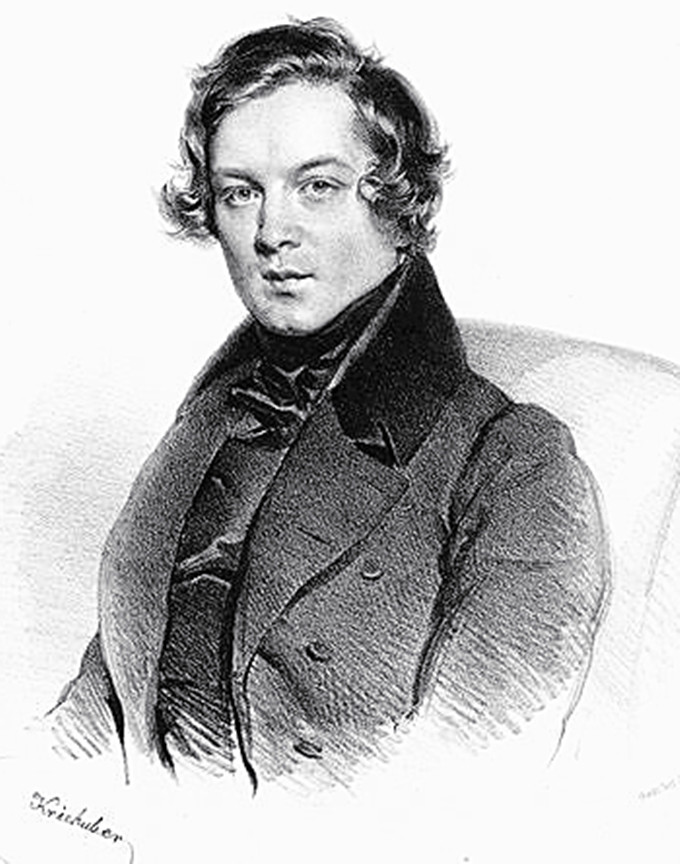 |
|
|
|
| |
罗伯特.舒曼(robert schumann,1810—1856) |
|
|
|
| |
|
|
|
|
| |
齐赫梅尔演奏+指挥《舒曼小提琴协奏曲》 |
|
|
|
| |
Thomas Zehetmair
conducts/plays Schumann Violin Concerto |
|
|
|
| |
|
|
|
|
| |
音乐历史上的今天
1936年8月3日,被克拉拉认为其中有“明显的疯狂迹象”、被禁演100年的舒曼《小提琴协奏曲》在柏林由约瑟夫.约阿希姆之子解禁,这部作品正是为约阿希姆而作。
1933年约阿希姆的曾姪女小提琴家的达兰妮(Jelly d’Arányi),在伦敦透过灵媒之口(during a spiritualist
séance in London),舒曼要求达兰妮收回原谱,并且演奏它,约阿希姆也借灵媒之口说曲谱在柏林国家图书馆。
刚好1937年纳粹政权禁止了孟德尔颂的作品,他们需要一个”新”的德国小提琴协奏曲,于是此曲确定要重见天日。
1937年11月26日,由贝姆指挥柏林爱乐协奏,小提琴家库伦坎普夫(Kulenkampff)于柏林首演成功,历经84年后舒曼小提琴协奏曲终于获得”肯定”。
d小调小提琴协奏曲是罗伯特·舒曼所作的唯一一首小提琴协奏曲。这是舒曼于1853年为小提琴手约阿希姆所作的协奏曲,此前他还为约阿希姆作过一首幻想曲。不过尽管约阿希姆演出过舒曼的幻想曲,却从未演出过舒曼的小提琴协奏曲,他一直封存着协奏曲的手稿,直到最后交给普鲁士国家图书馆存档,并立遗嘱不得在作曲家逝世100周年(也就是1956年)之前公开发表。然而,在1933年约阿希姆的两个侄孙女在伦敦参加了一次通灵会,听说分别召来了舒曼和约阿希姆的灵魂,要求发布自己未发布的曲目以及去普鲁士国家图书馆拿手稿,让这首曲目得以提前面世。不过曲目的首演决定却费了一番周折:梅纽因想为协奏曲做公开首演,但是约阿希姆的侄孙女不允许,最后在当时德国政府的坚持下要求该协奏曲必须在德国由德国人做首演,于是最后在1937年11月26日举办了舒曼d小调小提琴协奏曲的首演,乔治·库伦坎普夫做小提琴主奏,卡尔·伯姆指挥,柏林爱乐乐团伴奏。之后梅纽因在纽约做了协奏曲在美国的首演,约阿希姆的侄孙女则在伦敦进行了曲目的英国首演。
跟大多数协奏曲类似,这首协奏曲总共有3个乐章,大致遵循“快-慢-快”的结构,协奏曲没有华彩片段的设置:
第一乐章:强力地,不太快的速度,d小调,奏鸣曲式
第一乐章先以一个强劲的交响乐主题开场,紧接着是一个抒情主题。在随后的独奏和伴奏中,主奏的小提琴伴随着隐约的管弦乐组合进行演奏。主题发展逐渐在平稳地推进。在高速演奏的独奏声中巴洛克风格的伴奏显得格外明显。在尾声中,两个主题交汇组合形成新的主题。
第二乐章:缓慢地,降b大调,二段体
在第二乐章,首先用大提琴轻声演奏出切分前奏,接下来小提琴大声演出抒情的乐章主题。据说舒曼当时总有身边围绕着一群演奏音乐的鬼魂的幻觉,有些旋律优美动听,有些则是邪恶的,这些幽灵启发着舒曼的创作灵感但也威胁将他赶入地狱。舒曼于是就把这段旋律给记录下来成了这一乐章的主题,后来在他1854年的作品《幽灵变奏曲》里又再次引用。小提琴和伴奏乐队在低音域轮流演奏。到最后逐渐加快速度过渡到第三乐章。由于这个乐章旋律高贵而优雅。有人也把它形容为“天使的歌声”。
第三乐章:生动地,但不急速,d大调,回旋曲式
第三乐章是一个生机勃勃的舞曲般的回旋奏鸣曲式乐章,主题带有强烈的波兰舞曲旋律风格。
曲目不太具备舒曼早期曲目的诗意和情感色彩,更具有他后期作品的意向性和古典方式。约阿希姆认为该协奏曲是舒曼陷入精神错乱后的产物,其音乐本身就是病态的。
今日视频:1、齐赫梅尔演奏+指挥《舒曼d小调小提琴协奏曲》;弗兰克·彼得·齐默尔曼演绎
《舒曼d小调小提琴协奏曲》。 |
|
|
|
| |
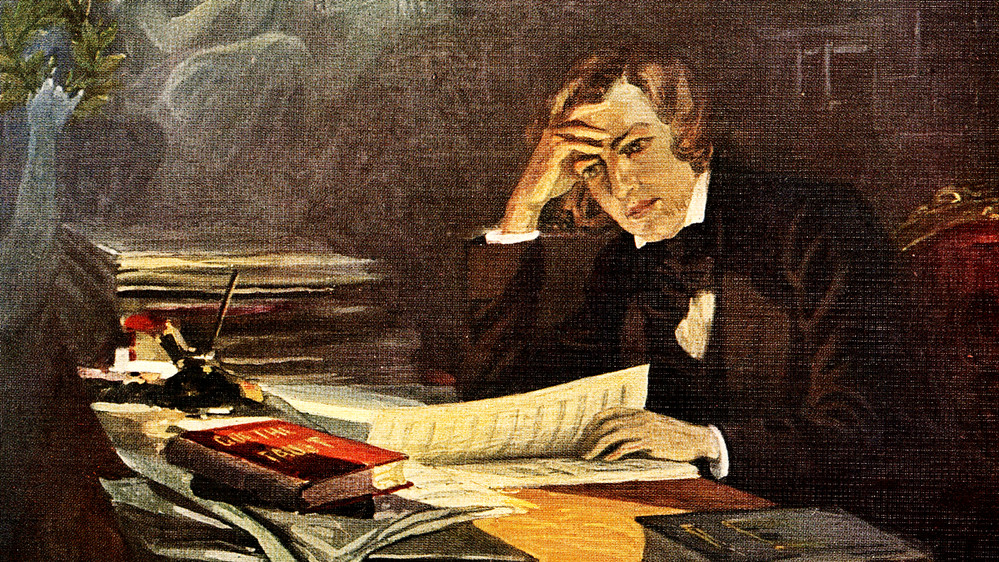 |
|
| |
罗伯特.舒曼(robert schumann)在创作中 |
|
|
|
| |
舒曼《d小调小提琴协奏曲》 |
|
|
|
| |
降临在苦恼的艺术家处的天使的旋律
舒曼同肖邦一样生于1810年。
说起肖邦,2010年诞辰200周年纪念时不仅举办了音乐盛典,同时电视及广播都在播放为其制作的特别节目。相比之下,舒曼多少欠缺一些华丽的色彩。
肖邦是“钢琴诗人”,在人眼前浮现出来的是纤细而病弱的王子形象,较受女性欢迎。
另一方面,舒曼是苦恼的艺术家形象。由于晚年精神失常,实在很难说是受人喜爱的角色。但是,正是猛一看毫不起眼的角色,才更应该注意其值得纪念的时光。
1854年,舒曼谱写了钢琴曲《降E大调主题变奏曲》。当时被伴随激烈疼痛的耳鸣折磨的舒曼,以“天使在歌唱”为主题旋律创作了此曲。
那么,这旋律真的是天使赐下的吗?
当然不是。所谓天使的主题,是舒曼前几年在创作《小提琴协奏曲》的第二乐章时的“旧点子”,他把自创的旋律错认为是天使的歌声。
舒曼跳进莱茵河里是这之后的事。穿着拖鞋从卧室出门,从桥的正中间跳了下去。但由于是在白天,舒曼马上被渔民救了上来。之后,他在精神病疗养院度过了晚年。
《d小调小提琴协奏曲》是因舒曼与知名小提琴家约阿希姆(Joachim
Joseph)相遇得到灵感而创作的作品。但是,或许是受到舒曼进入疗养院的影响,约阿希姆和舒曼的妻子克拉拉决定不将此曲出版和演奏。此作品就这样被雪藏,暂时消失了踪影。到了20世纪,《小提琴协奏曲》终于出现在人们的视线中。1937年,在柏林图书馆中约阿希姆的藏书内发现了乐谱。虽说舒曼创作此曲用了2周时间,但直到首次公演却过了80年。
现在再听此作品,深深感到作品中充满了舒曼独特而浓厚的浪漫情结。不得不感激这样的乐曲未被埋没。
第二乐章的旋律高贵而优雅。原来如此,或许真的可以认为是“天使的歌声”。
第三乐章是一个生机勃勃的舞曲般的回旋奏鸣曲式乐章,主题带有强烈的波兰舞曲旋律风格。
曲目不太具备舒曼早期曲目的诗意和情感色彩,更具有他后期作品的意向性和古典方式。约阿希姆认为该协奏曲是舒曼陷入精神错乱后的产物,其音乐本身就是病态的。 |
|
|
|
| |
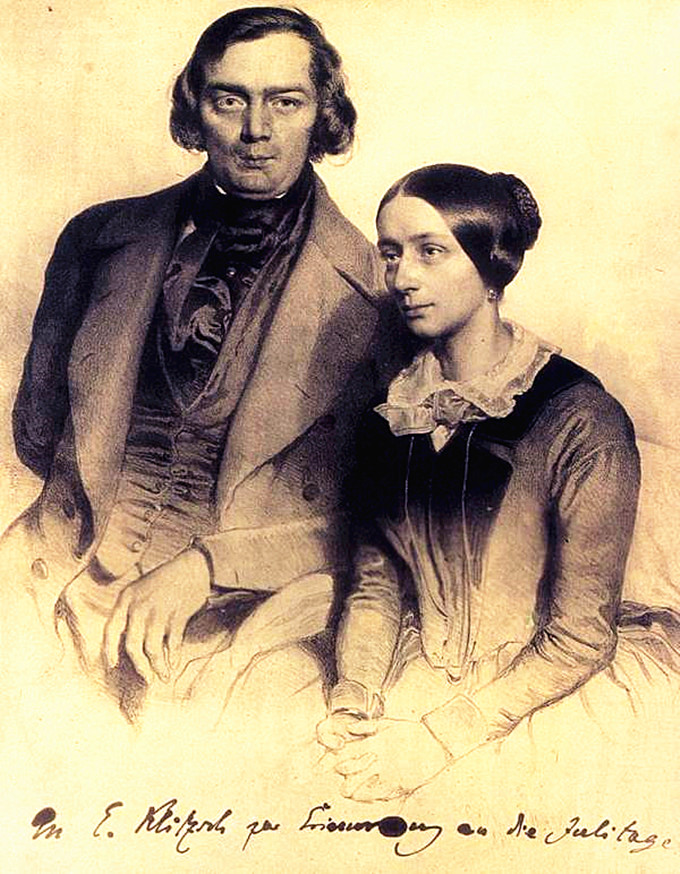 |
|
| |
罗伯特.舒曼(robert schumann)和克拉拉·舒曼(Schumann
Clara Josephine Wieck ) |
|
|
|
| |
Schumann violin
Concerto in D Minor
The melody of angels descending upon the distressed artist
Schumann, like Chopin, was born in 1810.
Speaking of Chopin, the 200th anniversary of his birth in 2010 was
marked not only by a music festival, but also by television and radio
specials.Schumann, by contrast, lacks some of the flamboyance.
Chopin was a "piano poet", and the image of a slender, sickly prince
emerged before people's eyes, which was more popular with women.
Schumann, on the other hand, is the image of the distressed artist.It's
hard to be a favorite character because of the insanity of old age.But
it is precisely the unremarkable characters that deserve more attention
when they are remembered.
In 1854 schumann wrote for the piano "Variations on a Theme in E Flat
Major".Schumann, who was suffering from intense and painful tinnitus,
composed the song with the theme of "Angels Singing".
So, was the melody really given by the angels?
Of course not.The angel theme was an "old idea" that Schumann had a few
years earlier when he was composing the second movement of the Violin
Concerto. He mistook the melody he had created for the song of angels.
Schumann's jump into the Rhine came later.He went out of the bedroom in
his slippers and jumped off the middle of the bridge.But as it was
daylight, Schumann was immediately rescued by fishermen.Then he spent
the rest of his life in a nursing home for the mentally ill.
"Violin Concerto" was inspired by a meeting between Schumann and the
renowned violinist Joachim Joseph.But joachim and Schumann's wife,
Clara, decided not to publish and play it, perhaps because of schumann's
admission to a nursing home.Thus the work was buried and temporarily
disappeared.In the 20th century, the Violin Concerto finally appeared in
people's eyes.In 1937, music scores were found in Joachim's collection
in the Berlin Library.Although it took Schumann two weeks to write the
song, it was 80 years before it was first performed.
Now listen to this work, deeply feel the work is full of Schumann's
unique and strong romantic complex.I have to be grateful that this piece
of music is not buried.
The melody of the second movement is noble and elegant.So it is, perhaps
really can be considered "angel's song".
The third movement is a vibrant dance-like cyclotron sonata movement,
with a strong Polonaise theme.
The repertoire does not have the poetic and emotional color of
Schumann's early repertoire, but has the intentionality and classical
way of his later works.Joachim believed that the concerto was the
product of Schumann's delirium, and that the music itself was
pathological. |
|
|
|
| |
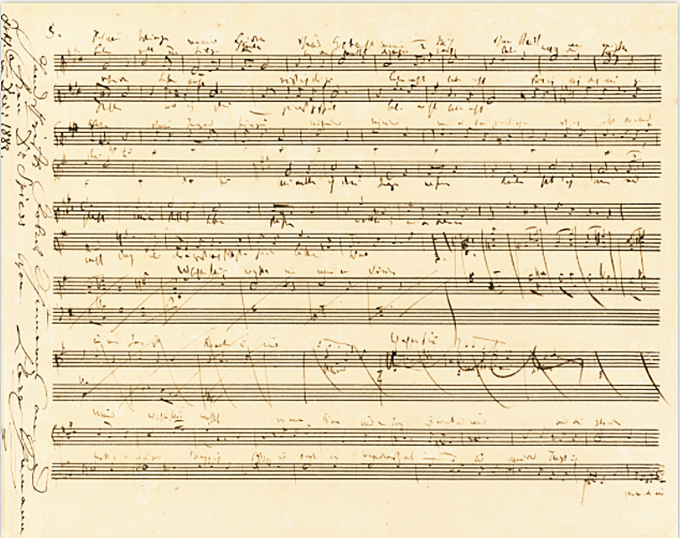 |
|
|
|
| |
罗伯特.舒曼(robert schumann)手稿 |
|
|
|
| |
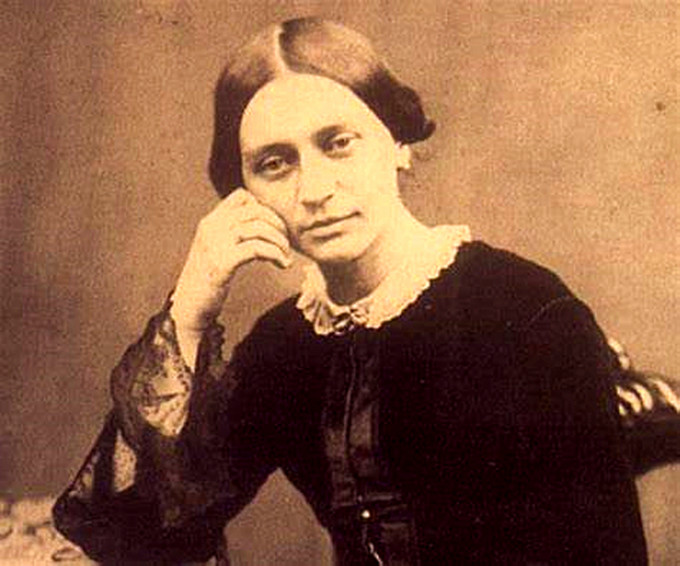 |
|
|
|
| |
克拉拉·舒曼(Schumann Clara
Josephine Wieck 1819-1896) |
|
|
|
| |
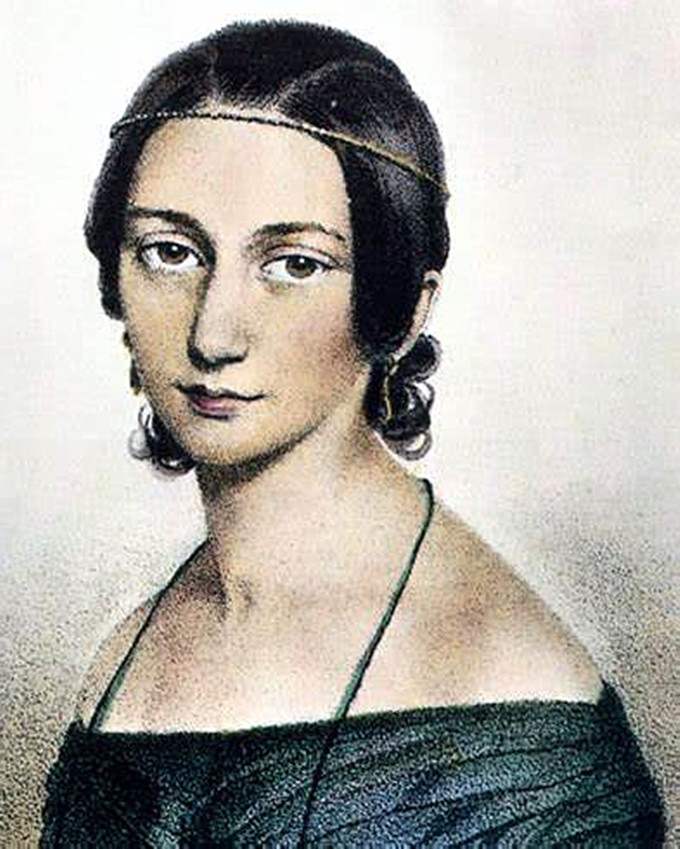 |
|
|
|
| |
克拉拉·舒曼(Schumann Clara
Josephine Wieck 1819-1896) |
|
|
|
| |
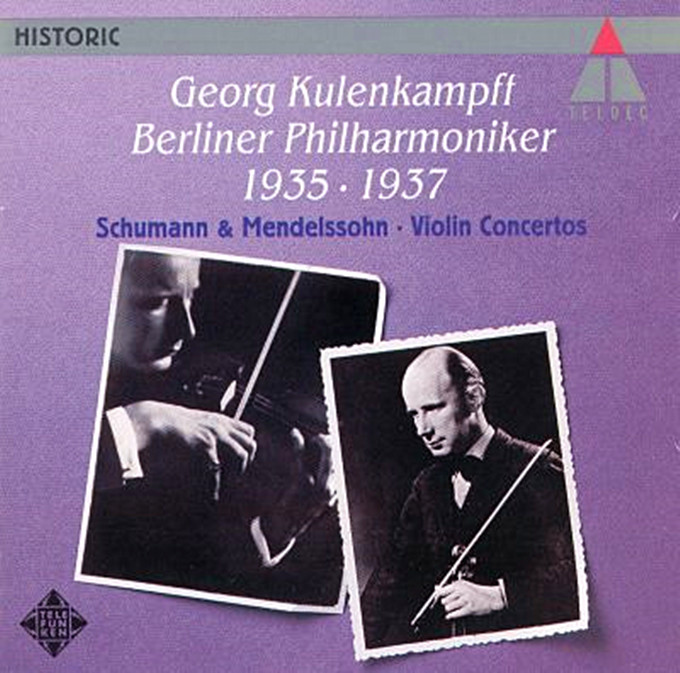 |
|
|
|
| |
第一个演奏舒曼小提琴协奏曲的版本是1937年11月26日,由贝姆指挥柏林爱乐协奏,小提琴家库伦坎普夫(Kulenkampff)于柏林首演成功,历经84年后舒曼小提琴协奏曲终于获得”肯定”。 |
|
|
|
| |
The first version of the
Schumann violin concerto was performed by Bem at the Berlin Philharmonic
on November 26, 1937. It was first performed in Berlin by Kulenkampff, a
violinist. After 84 years, the Schumann violin Concerto was finally
"confirmed". |
|
|
|
| |
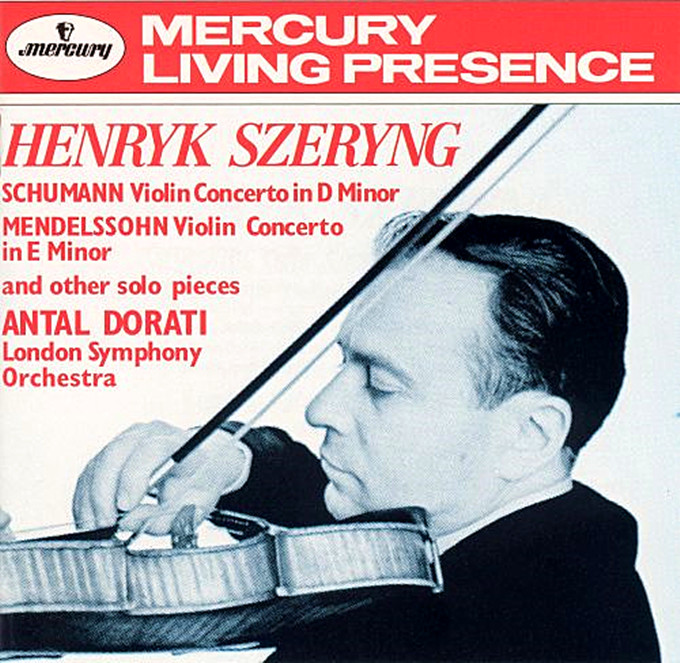 |
|
|
|
| |
亨里克·谢林演奏舒曼小提琴协奏曲的版本 |
|
|
|
| |
Henrik Schelling plays the
Schumann version of the violin Concerto |
|
|
|
| |
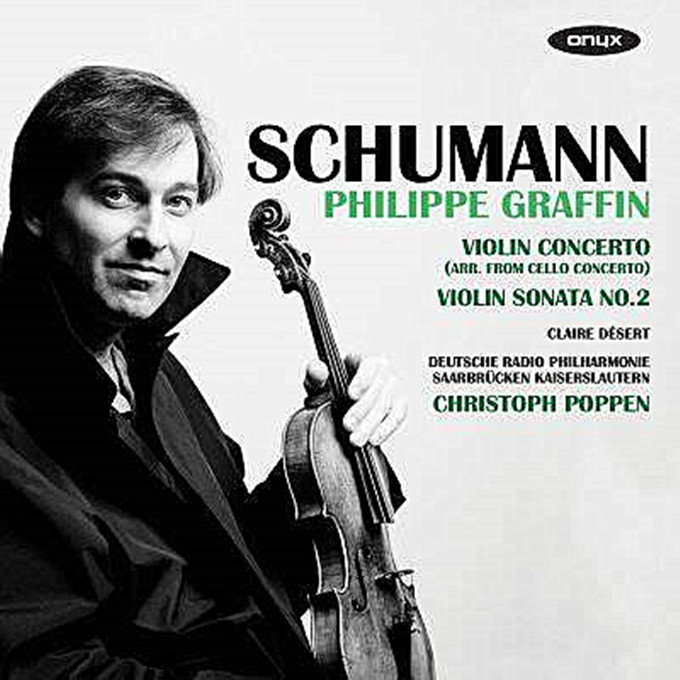 |
|
|
|
| |
菲利普·格拉芬演奏舒曼小提琴协奏曲的版本 |
|
|
|
| |
Philip Griffin playing the
Schumann version of the violin Concerto |
|
|
|
| |
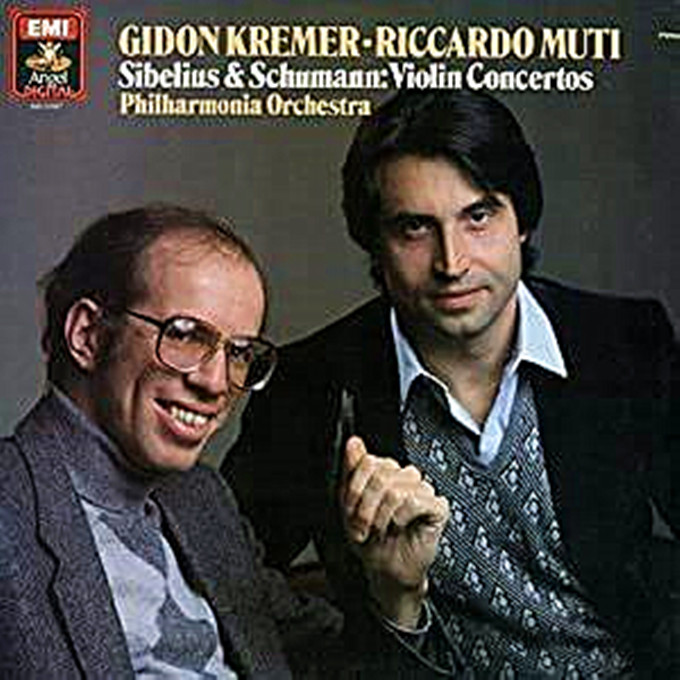 |
|
|
|
| |
电影吉东·克莱默和指挥家穆蒂合作的舒曼小提琴协奏曲的版本 |
|
|
|
| |
Version of schumann's violin Concerto
by Jidong Kramer and conductor Mundie |
|
|
|
| |
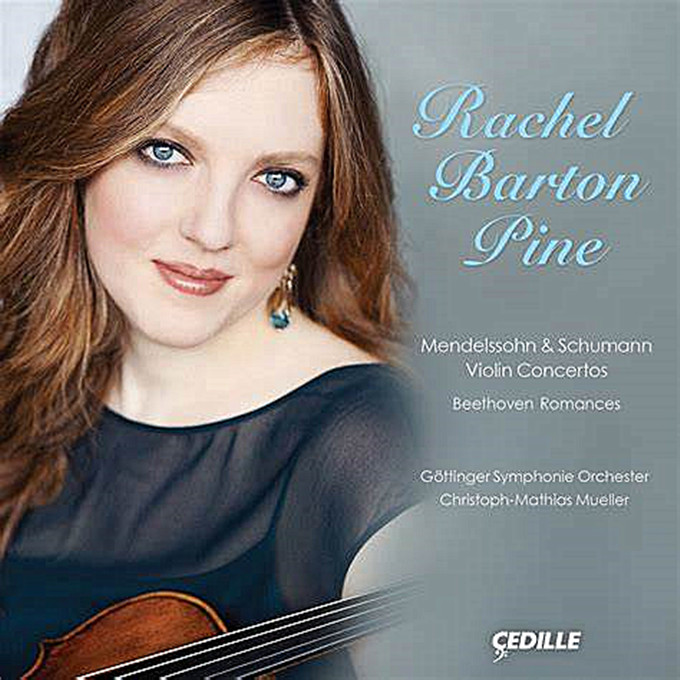 |
|
|
|
| |
雷切尔巴顿松演奏舒曼小提琴协奏曲的版本 |
|
|
|
| |
|
|
|
|
| |
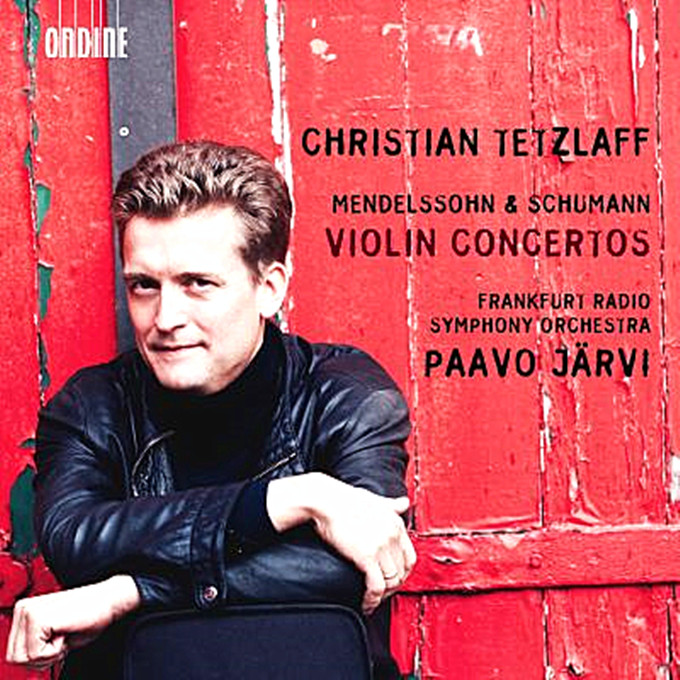 |
|
|
|
| |
克里斯蒂安·特兹拉夫CHRISTIAN TETZLAFF演奏舒曼小提琴协奏曲的版本 |
|
|
|
| |
CHRISTIAN TETZLAFF plays schumann's
version of the Violin Concerto |
|
|
|
| |
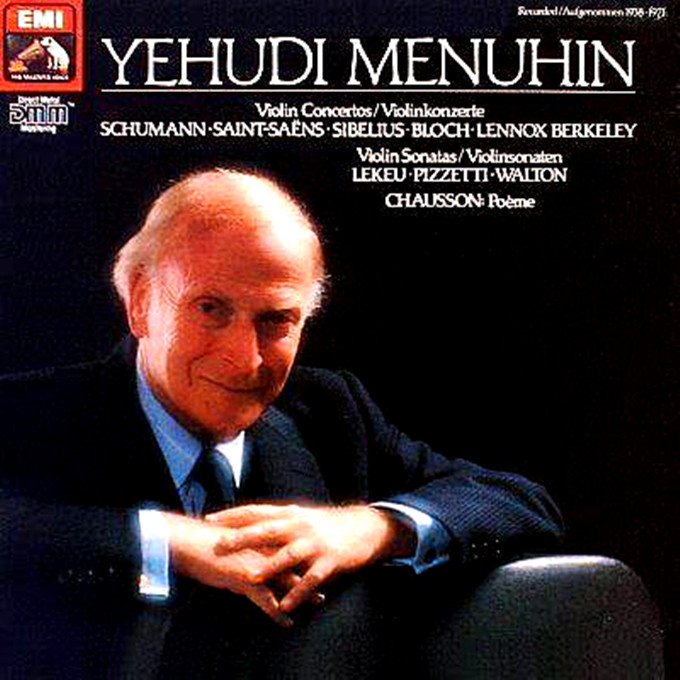 |
|
|
|
| |
耶胡迪·梅纽因演奏舒曼小提琴协奏曲的一个版本 |
|
|
|
| |
The great violinist Yehudi
Menuhin played a version of the Schumann violin Concerto |
|
|
|
| |
 |
|
|
|
| |
伟大的小提琴家耶胡迪·梅纽因演奏舒曼小提琴协奏曲的另一个版本 |
|
|
|
| |
The great violinist Yehudi
Menuhin played another version of the Schumann violin concerto |
|
|
|
| |
|
|
|
|
| |
Today in the
history of music
On August 3, 1936, Schumann's violin Concerto, banned for 100 years by
Clara, was released in Berlin by the son of Joseph Joachim, for whom it
had been written.
In 1933, During a spiritualist seance in London, The violinist Jelly d
'Aranyi, Joachim's great-niece, asked her to take back the original
score and play it. Through the medium, He said the score was in the
National Library of Berlin.
It was only in 1937 that the Nazi regime banned the Mendelian concerto.
They needed a "new" German violin concerto, and it was determined to be
rediscovered.
On November 26, 1937, behm conducted the Berlin philharmonic concerto,
in which Kulenkampff, a violinist, performed successfully for the first
time. After 84 years, schumann's violin concerto was finally
"confirmed".
The Violin Concerto in D Minor is the only violin concerto ever written
by Robert Schumann.It was schumann's 1853 concerto for the violinist
Joachim, for whom he had previously composed a fantasia.But while
Joachim performed Schumann's fantasia, he never performed schumann's
violin concerto. He kept the manuscript under reserve until it was
finally filed in the Prussian National Library, and made a will not be
published until the 100th anniversary of the composer's death, in
1956.In 1933, however, two of Joachim's grand-nephegs attended a seance
in London and heard that the spirits of Schumann and Joachim had been
summoned, asking for their own unpublished work and a manuscript from
the Prussian National Library to bring it forward.But the music of the
premiere decision has had a difficult time: menuhin want to do public
debut concerto, but joachim grandniece not allowed, the final at the
time the German government adhere to the requirements of the concerto
has to be done by German premiere in Germany, and finally in 1937 held
on November 26, schumann's violin concerto in d minor premiere, George
cullen candy puff do violin presided, Karl's command, the Berlin
philharmonic orchestra.Menuhin then made the American premiere of his
concerto in New York, and Joachim's great-niece made her British debut
in London.
Like most concertos, this one has three movements in total and follows a
roughly "fast-slow-fast" structure. There are no colorful sections:
First movement: strong, not too fast, D minor, sonata form
The first movement opens with a strong symphonic theme, followed by a
lyrical theme.In subsequent solos and accompaniments, the lead violin is
played with a faint orchestra.The development of the theme is gradually
progressing smoothly.The baroque accompaniment is particularly evident
in the high-speed solos.In the epilogue, the two themes converge to form
a new theme.
Movement 2: Slowly, In B flat major, in bisected
In the second movement, the cello is played with a light syncopation
prelude, followed by a loud lyrical theme.It is said that Schumann was
always surrounded by hallucinations of ghosts playing music, some
melodious and some evil, which inspired his creation but threatened to
drive him to hell.Schumann then recorded the melody as the theme of the
movement, which he later quoted again in his 1854 work, The Phantom
Variations.The violin alternated with the backing band in the low
register.Towards the end we gradually accelerate into the third
movement.Because the melody of this movement is noble and elegant.Some
have also described it as "the song of angels".
Movement 3: Vivid, but not rapid, in D major, roundabout
The third movement is a vibrant dance-like cyclotron sonata movement,
with a strong Polonaise theme.
The repertoire does not have the poetic and emotional color of
Schumann's early repertoire, but has the intentionality and classical
way of his later works.Joachim believed that the concerto was the
product of Schumann's delirium, and that the music itself was
pathological.
Video of today: 1. Zihmer performing + conducting Schumann Violin
Concerto in D Minor; 2.Frank Peter Zimmerman for the Schumann Violin
Concerto in D Minor. |
|
|
|
| |
|
|
|
|
| |
 |
|
|
|
| |
托马斯·齐赫梅尔(Thomas
Zehetmair) |
|
|
|
| |
托马斯·齐赫梅尔(Thomas
Zehetmair)是当代最灵活的音乐家之一,多年来一直担任指挥,小提琴家,并在国际音乐会舞台和录音室中拥有自己的弦乐四重奏。
自2016/17赛季以来,他一直担任温特图尔音乐学院的首席指挥。 安东·布鲁克纳(Anton
Bruckner)的《第三交响曲》的录音证明了这种卓有成效的合作。在此之前,托马斯·齐赫梅尔是巴黎室内管弦乐团的首席指挥,也是美国圣保罗室内乐团的艺术合作伙伴。
从2002年到2014年,他担任皇家北方交响乐团的音乐总监,并通过舒伯特,舒曼,西贝柳斯,汉斯加尔和布里顿新发现的作品录制了英国领先的交响乐团之一。
作为“指挥奖获得者”,他仍然与管弦乐队保持联系。 他获得了纽卡斯尔和魏玛大学的荣誉博士学位。
在即将到来的季节,客座指挥将与赫尔辛基爱乐乐团,西雅图交响乐团,斯韦特兰诺夫交响乐团,莫斯科和圣保罗交响乐团合作。
从2019年9月起,托马斯·齐赫梅尔将担任斯图加特室内乐团的首席指挥。 |
|
|
|
| |
 |
|
| |
托马斯·齐赫梅尔(Thomas
Zehetmair) |
|
|
|
| |
Thomas
Zehetmair
Thomas Zehetmair gilt als einer der vielseitigsten Musiker
unserer Zeit und ist seit vielen Jahren als Dirigent, Geiger und
mit seinem eigenen Streichquartett auf den internationalen
Konzertpodien und in den Studios präsent. Seit der Saison
2016/17 ist er Chefdirigent des Musikkollegiums Winterthur. Die
Einspielung von Anton Bruckners 3. Symphonie zeugt von dieser
fruchtbaren Zusammenarbeit. Davor war Thomas Zehetmair
Chefdirigent des Orchestre de chambre de Paris und Artistic
Partner des Saint Paul Chamber Orchestra, USA.
Von 2002 bis 2014 wirkte er als Music Director der Royal
Northern Sinfonia und prägte sie zu einem der führenden
Orchester Englands, dokumentiert durch Einspielungen von
Sinfonien von Schubert, Schumann, Sibelius, Hans Gál und neu
entdeckten Werken von Britten. Als «Conductor laureate» ist er
dem Orchester weiterhin verbunden. Ehrendoktorwürden empfing er
von den Universitäten in Newcastle und Weimar. In den kommenden
Spielzeiten finden Gastdirigate mit dem Helsinki Philharmonic,
Seattle Symphony Orchestra, Svetlanov Symphony Orchestra,
Moskau, und São Paulo Symphony Orchestra statt. Ab September
2019 ist Thomas Zehetmair Chefdirigent des Stuttgarter
Kammerorchesters. |
|
|
|
| |
|
|
|
|
| |
|
|
|
|
| |
弗兰克·彼得·齐默尔曼演绎舒曼d小调小提琴协奏曲 |
|
|
|
| |
Frank Peter Zimmerman
for The Schumann Violin Concerto in D Minor |
|
|
|
| |
演奏者:弗兰克·彼得·齐默尔曼
演奏家介绍:弗兰克·彼得·齐默尔曼1965年出生在德国的杜伊斯堡,5岁开始学习小提琴,10岁举办个人第一场音乐会。
在1983年结束与赫曼·克雷伯斯的学习后,齐尔默曼与世界所有主要乐团以及世界最知名的指挥家合作过。他与乐团合作的音乐会以及独奏音乐会已经遍布欧洲、美国、日本、南美和澳大利亚的所有主要音乐场馆和国际音乐节。他曾与纽约爱乐乐团,克里夫兰管弦乐团,
波士顿交响乐团,柏林爱乐乐团,巴伐利亚广播交响乐团,伦敦交响乐团,爱乐乐团,德累斯顿国家交响乐团,巴黎交响乐团和阿姆斯特丹皇家音乐厅管弦乐团等合作过。
曲目简介:1.强有力,用不太快的速度,d小调,协奏型奏鸣曲式。第一小提琴先奏第一主题,确保后,仍以第一小提琴奏F大调第二主题。长笛纠缠后,主奏小提琴以复弦奏法奏第一主题转调至F大调,主奏小提琴奏第二主题,作技巧性发展后,结束呈示部。发展部以乐队强有力地奏F大调第一主题始,主奏小提琴加人后,以技巧发展第一主题,再以D小调呈示第二主题,予以发展。乐队奏第一主题而进人再现部,主奏小提琴仍以复弦奏法再现第一主题,第二主题为D大调,最后在弦乐奏第一主题动机中结束。
2.缓慢地,降B大调,二段体。先以低音管、圆号、弦乐的对位始,大提琴分为两个声部奏含切分音的旋律。主奏小提琴奏新旋律进人后,接过大提琴切分音动机发展。主奏小提琴再奏它带来的旋律,大提琴再奏切分音动机,速度加快而进人第三乐章。
3.生动地,但不急速,D大调,回旋曲式。回旋主题在弦乐与圆号伴奏之上,由主奏小提琴呈示,乐队承接,达到高潮。主奏小提琴奏抒情的经过句,然后才引出副主题。乐队重现主题,大提琴引进第
一乐章切分音旋律,予以纠缠,展开发展。主奏小提琴奏主题变化,乐队承接后,再现副主题,乐队再奏主题而引向结尾,主奏小提琴以技巧而引向高潮。
相较所谓四大小提琴协奏曲而言,这首曲子被演奏的机会较少,并非主流演奏家首选。 |
|
|
|
| |
未得原作者编者授权严禁转载www.mt77.com任何内容 |
|
|
|
|
|
|
|
|
|
|
|
|
|
|
.png)

